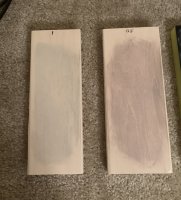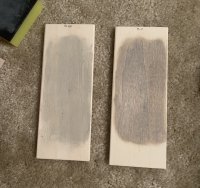I bought a 12x12 by 3/4" piece of acrylic and a friend of mine ripped it into 4x strips of 12x 2-7/8" wide. They felt heavy, and not that great to hold, so I decided to give them round cuts on the bottom and a slot along the two long sides to provide multiple ways for grabbing/holding the block.
Here I started with the side slots on my mill:

and here I am giving each block the round cuts on the bottom:

I gave each block a different number of holes just for fun:

Once I had machined all 3x blocks, I used a permanent marker to label each block, and I glued the 1/2" thick balsa strips:

Let them dry overnight:

Once tried I sanded them with 400 grit sandpaper on a flat piece of white marble:

It is hard to appreciate how they "look" as they are hard to photograph, but here in this close ups you can sorta-see the details:


Here I started with the side slots on my mill:
and here I am giving each block the round cuts on the bottom:
I gave each block a different number of holes just for fun:
Once I had machined all 3x blocks, I used a permanent marker to label each block, and I glued the 1/2" thick balsa strips:
Let them dry overnight:
Once tried I sanded them with 400 grit sandpaper on a flat piece of white marble:
It is hard to appreciate how they "look" as they are hard to photograph, but here in this close ups you can sorta-see the details:





